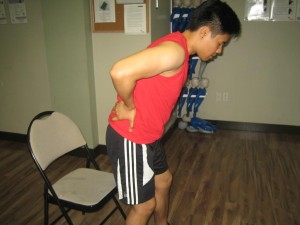A compression fracture occurs once the normal vertebral structure of the spine is compressed or squeezed to a smaller height. Take note that this injury typically occurs in two groups of individuals.
- Individuals who were involved in a traumatic vehicular accidents. Once a load is placed on the vertebrae that is way beyond its stability, it has the tendency to collapse. Remember that this is likely to occur during a fall.
- Individuals who have osteoporosis which is a condition that causes bone thinning. As the bones starts to thin out, they are less able to support the load of the individual. Those who have osteoporosis can even develop compression fractures without sustaining severe injuries, even while engaging in daily activities or while at work.
An individual who is involved in a vehicular accident should be suspected with a compression fracture especially in highly traumatic accidents.

Symptoms of a compression fracture
The common issue among individuals with a compression fracture is back pain. Those who have osteoporosis who endured several compression fractures may start to notice the curvature of the spine. The reason for this is that the vertebrae are compressed in front and usually normal in the back area. The wedge-shaped appearance causes the spine to curve in a forward manner. If there is enough compression, this might become an evident curvature. Individuals who have compression fractures will also notice a loss of their overall height due to the diminished size of the spinal column.
In case of serious traumatic fractures, the compression typically occurs around the spinal cord and nerves. This is considered serious and might require immediate treatment in order to prevent or relieve the pressure placed on the spinal cord or nerves.
Treatment of compression fractures
The ideal form of treatment for compression fractures is prevention. In most cases, the treatment is focused on reducing the pain as well as preventing injuries in the future. This is achieved by proper management of osteoporosis with calcium supplements, exercise and medications.
In case the pain experienced by the individual is intense and collapse turns out to be inevitable, a procedure known as vertebroplasty might be considered. During this procedure, the doctor will restore the height of the bone and introduces cement within the vertebra to steady the fracture and prevent further collapse.
It is important to note that compression fractures typically heal fully in about 8-12 weeks. Individuals who have one compression fracture are more likely to end up with another one. Due to this, prevention of future compression fractures should be addressed. In addition, understanding osteoporosis can help avoid this common issue.
Once an individual is suspected with a compression fracture, the individual should have the condition properly assessed so that appropriate treatment can be started as soon as possible.
